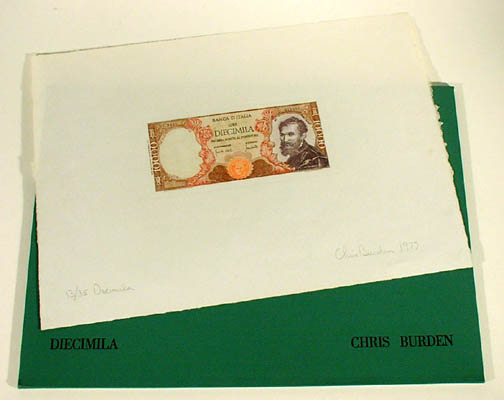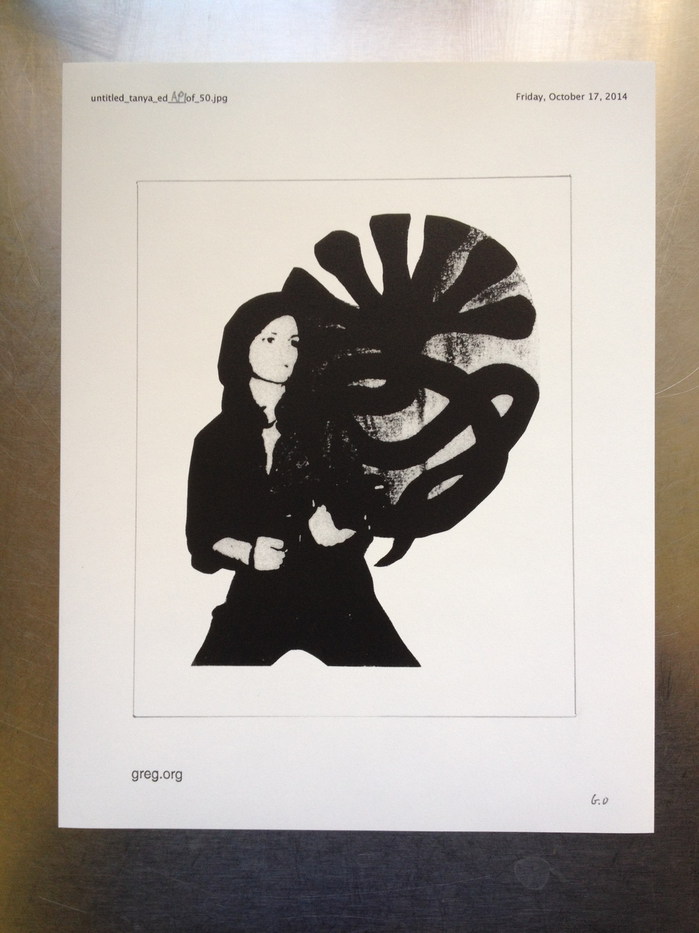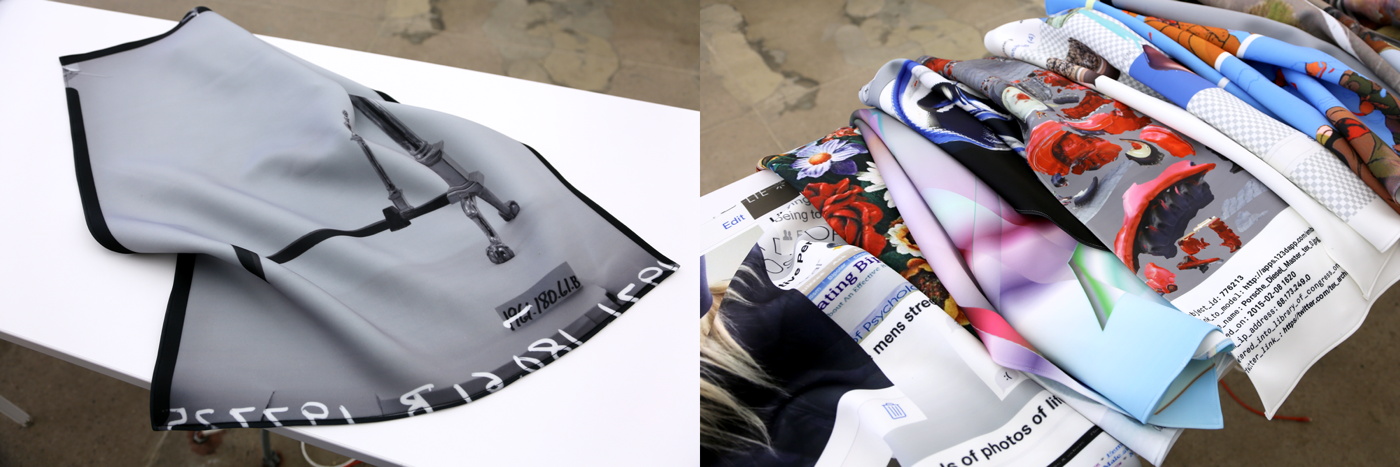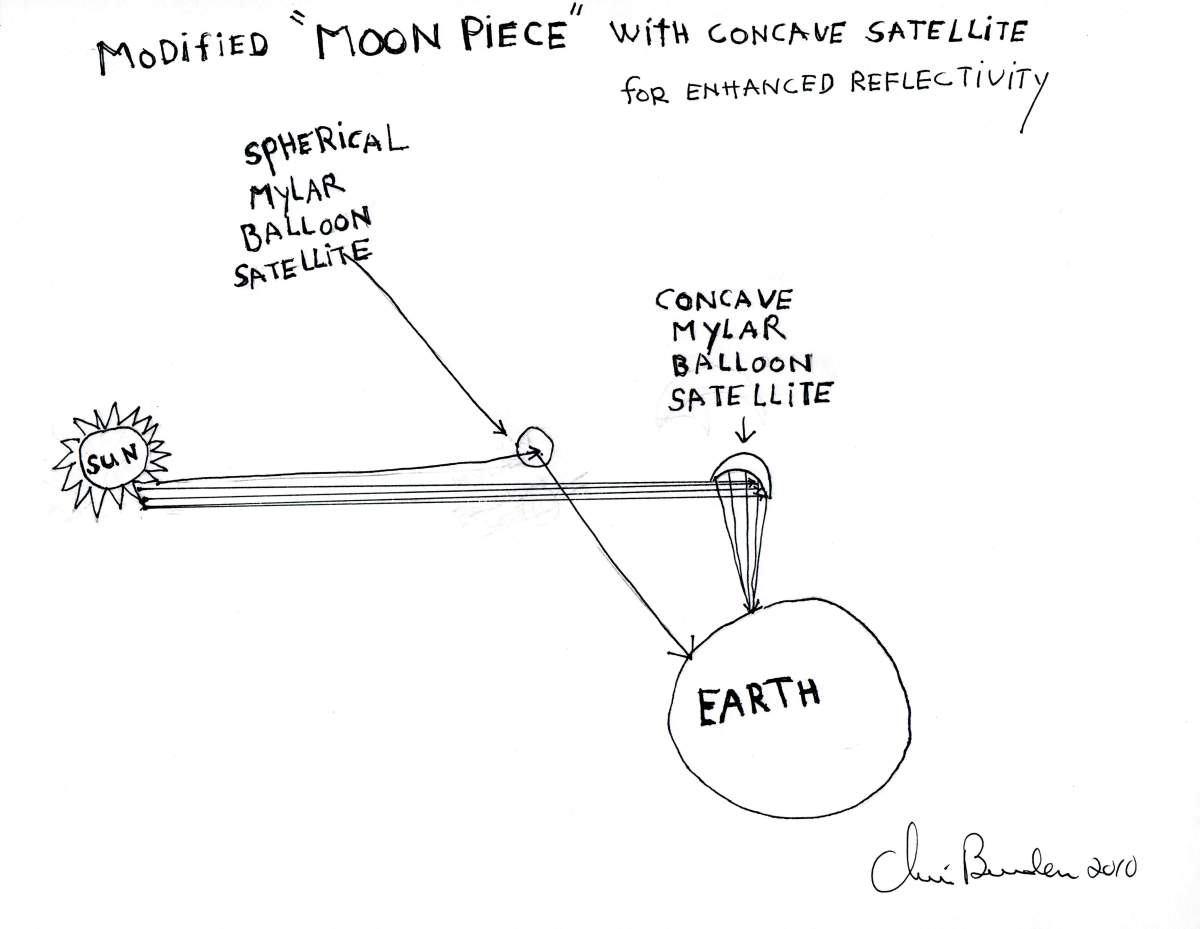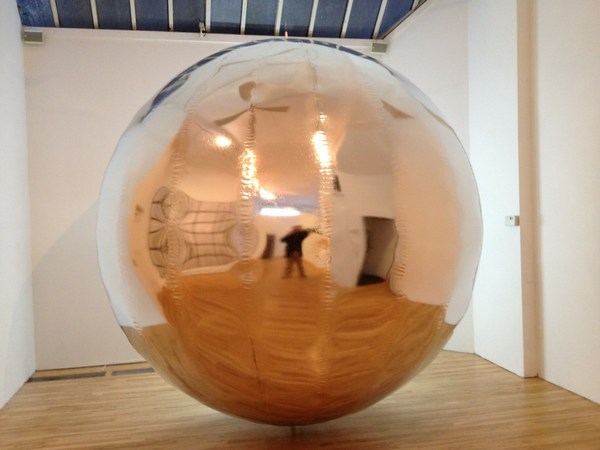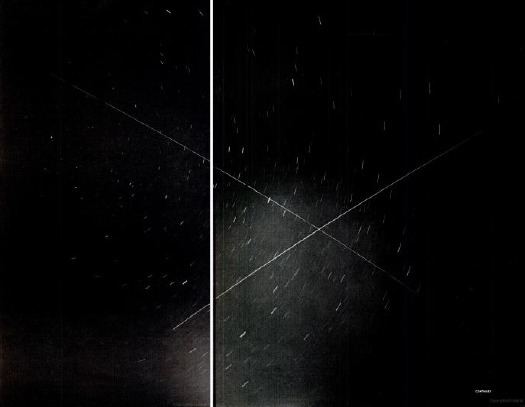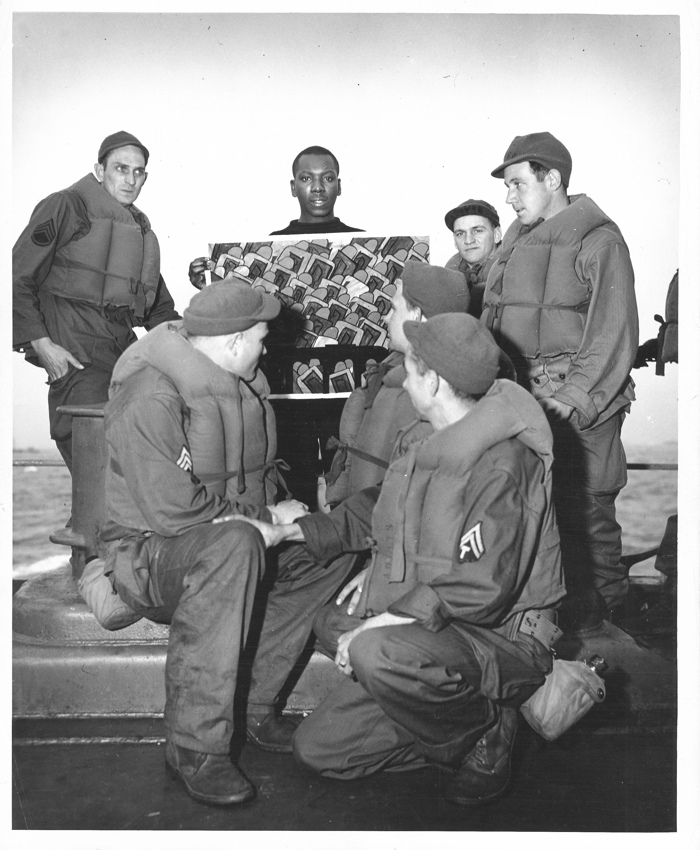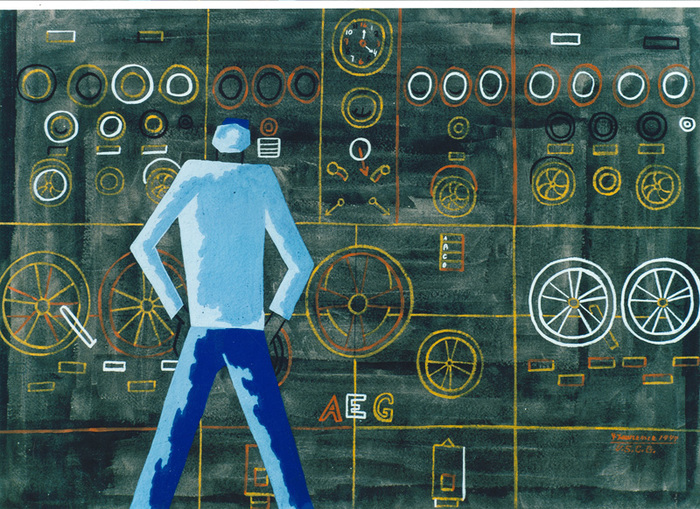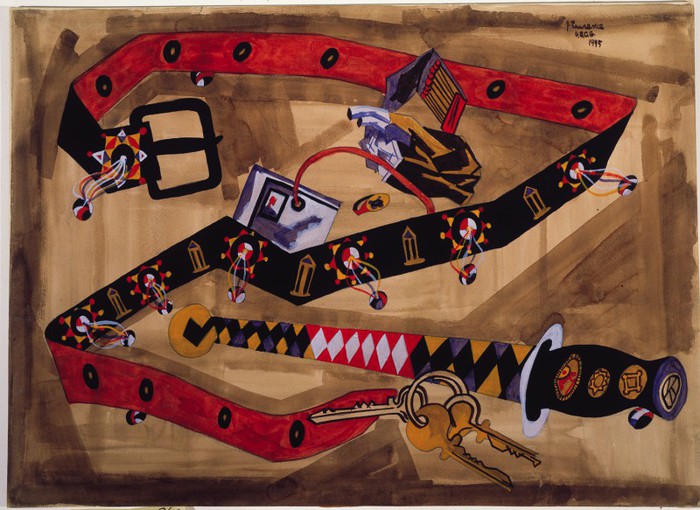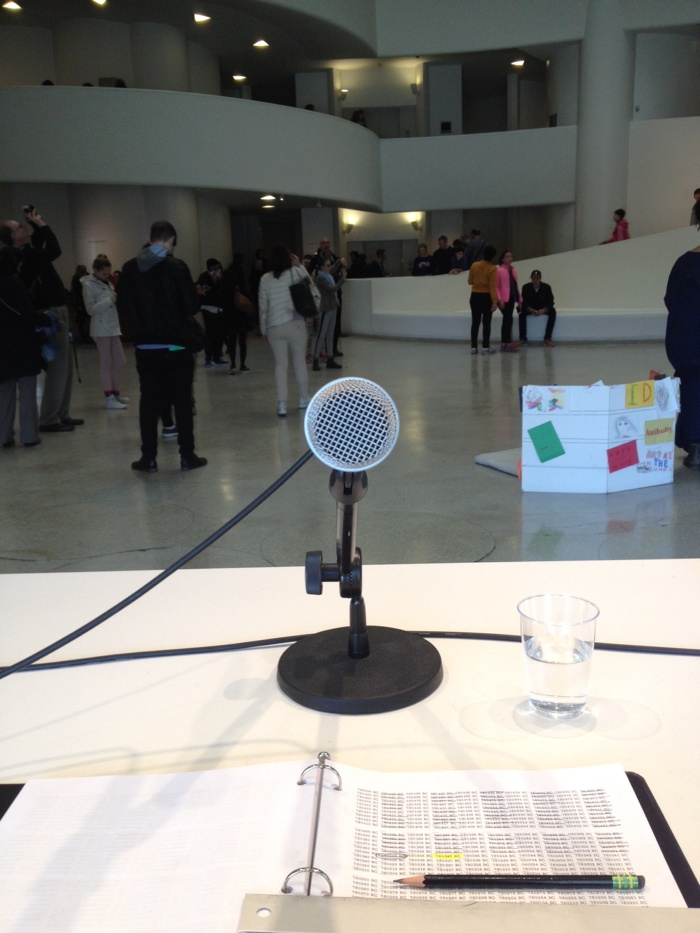
On Kawara's One Million Years readings have always had a profound effect on me. From the first time I saw it at the Dia, to the resonance of One Million Years in Okwui Enwezor's Documenta 11 in 2002; to an installation at David Zwirner, to the reopening Stedelijk. It was Brian Sholis's moving account of reading with his then-fiancee Julia Ault at Zwirner that cemented my determination to read one day, too.
That day was April 5th, Easter Sunday. I had booked my wife and myself to read in the first shift, just as the Guggenheim opened. I'd already seen the museum's On Kawara retrospective, but on a day when there was no reading. These are some recollections and thoughts of the experience with the piece.
One Million Years and an unannounced roaming exhibition of one week's worth of date paintings in kindergarten classes are the two projects Kawara authorized to continue after his death last summer at age 29,771 days. Mary, who was coordinating production of One Million Years and prepping volunteers, took our picture when we sat down on the dais. She said the artist used to listen to recordings of One Million Years as he worked in his studio, and that the liked to have photos of the readers.
I had not anticipated such a thing, but now the entire project felt extremely personal. It was not just a performance, but a communication, a communion, with the artist himself. But not anymore, not for us. It turns out the Guggenheim was recording the reading, but only for exhibition documentation. Posthumous recordings like ours would not end up contributing to a "complete" recording. That aspect of the work, too, ended with the artist's death.
Still, as I'd expected, reading itself was a wonderful experience. I found it somehow meditative and exciting at the same time. I found myself thinking of the dates we were reading, long before modern humans, and their history, existed. Yet narrative was there; the numbers became their own narrative. There was suspense as we counted down to an even hundred. Symmetrical numbers, or pairs or trios of digits, or chains of multi-syllabics, felt momentous, like a winning poker hand. These numbers, these years, with literally no significance of their own had significance thrust upon them, at least for a few seconds, by being read aloud. It turns out long numbers are not usually read aloud.
The greatest thrill was the echo of the Guggenheim's rotunda. We sat on the ground floor, backs to the window, with loudspeakers flanking us, and our numbers seemed to ring out through the show. We took it slow and serious. We intoned, and I imagined how we must affect the reception of the rest of Kawara's works up the ramp. We contributed our small part to everyone else's enlightenment.
After we ended, we went through the show. We stopped on the way out to watch our replacements. Mary had said it's easy to tell when the readers are a couple. Inversely, it was immediately obvious that the two jokers after us were either breaking up, or didn't know each other and could not be bothered. Even on the rare numbers they didn't mumble away into nothing, you could barely hear them standing right in front of the dais.
But how was this really any different from our experience? In fact the sound from One Million Years never left the ground floor, and sometimes it hardly left the little stage. In the hard-surfaced cacophony of the rotunda, One Million Years was essentially lost. I felt very acutely the gap between our rewarding personal experience of performing and the empty opacity the being in the audience. Or of not even noticing the piece existed.
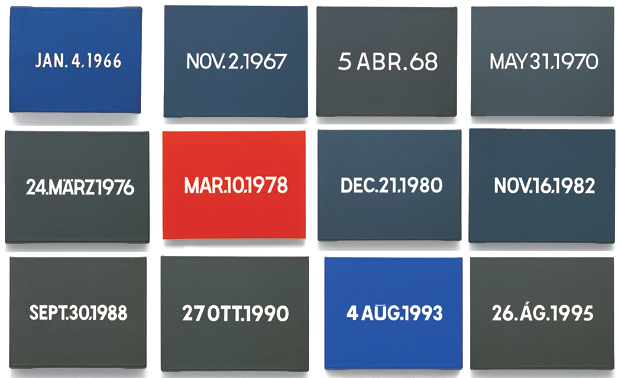
In glass half-full mode I considered this divergence alongside the rest of Kawara's practice, where dates and times and lists barely hint at the complexities of the artist's daily experience.
Did I say half-full? This comparison, along with some of Kawara's lesser known series [60s word diagrams, the coded letters, and of course, all the newspaper clippings in all the Today series boxes] made me wonder what there actually is to know? Frankly, I've begun to fear that under it all lurks an actual Message, hidden by Kawara, just waiting to be cracked. And that the profundity, the interpretation, the significance, will turn out to be all in our heads.

